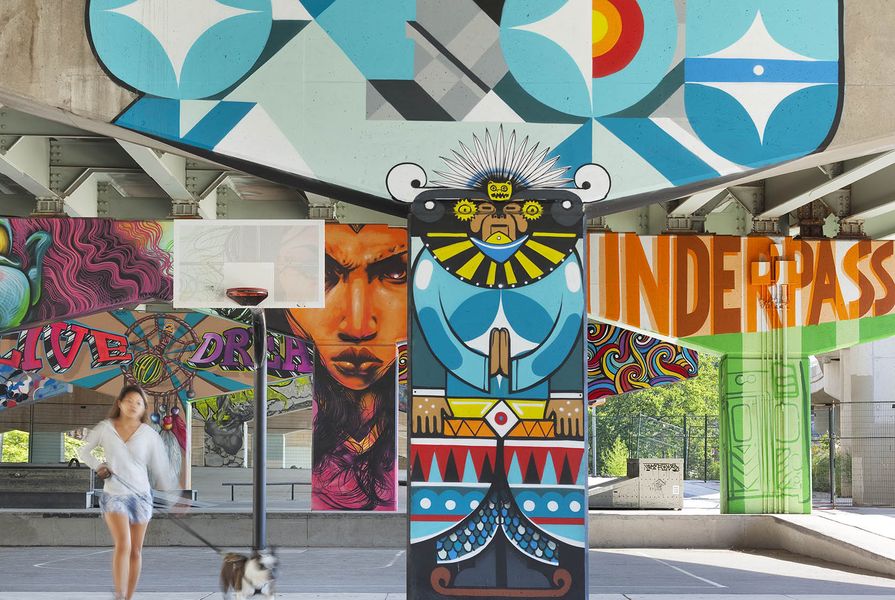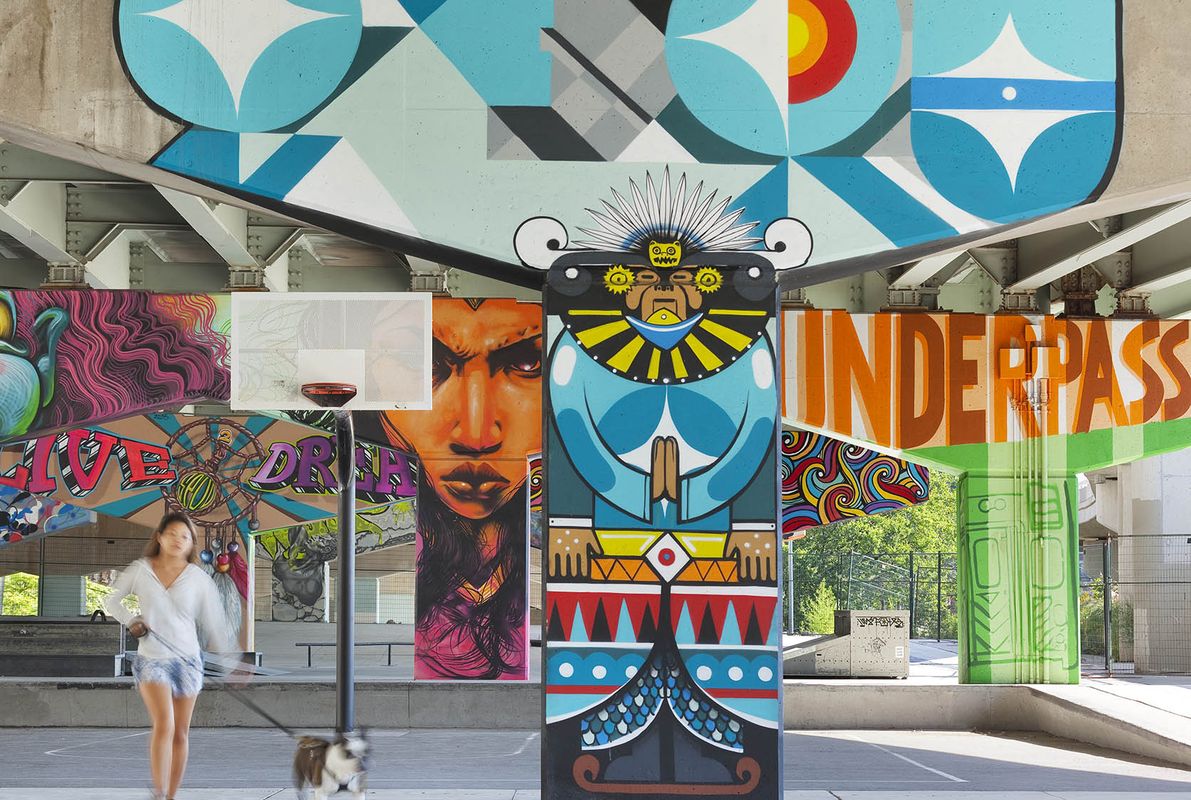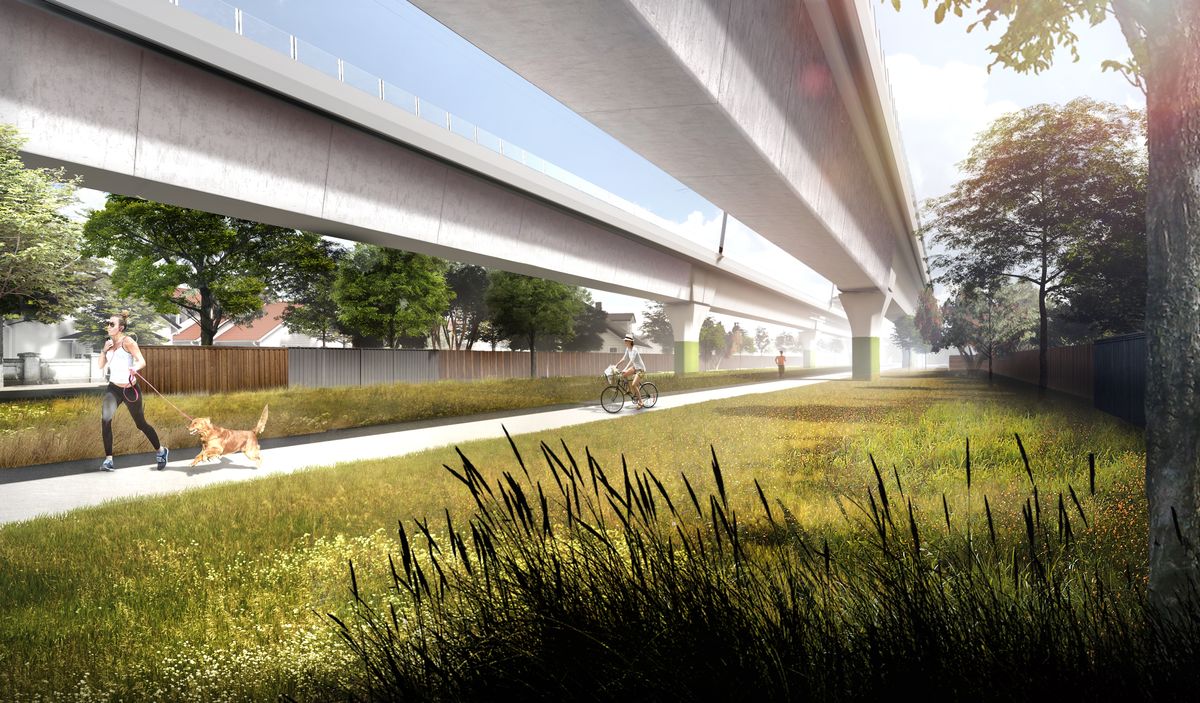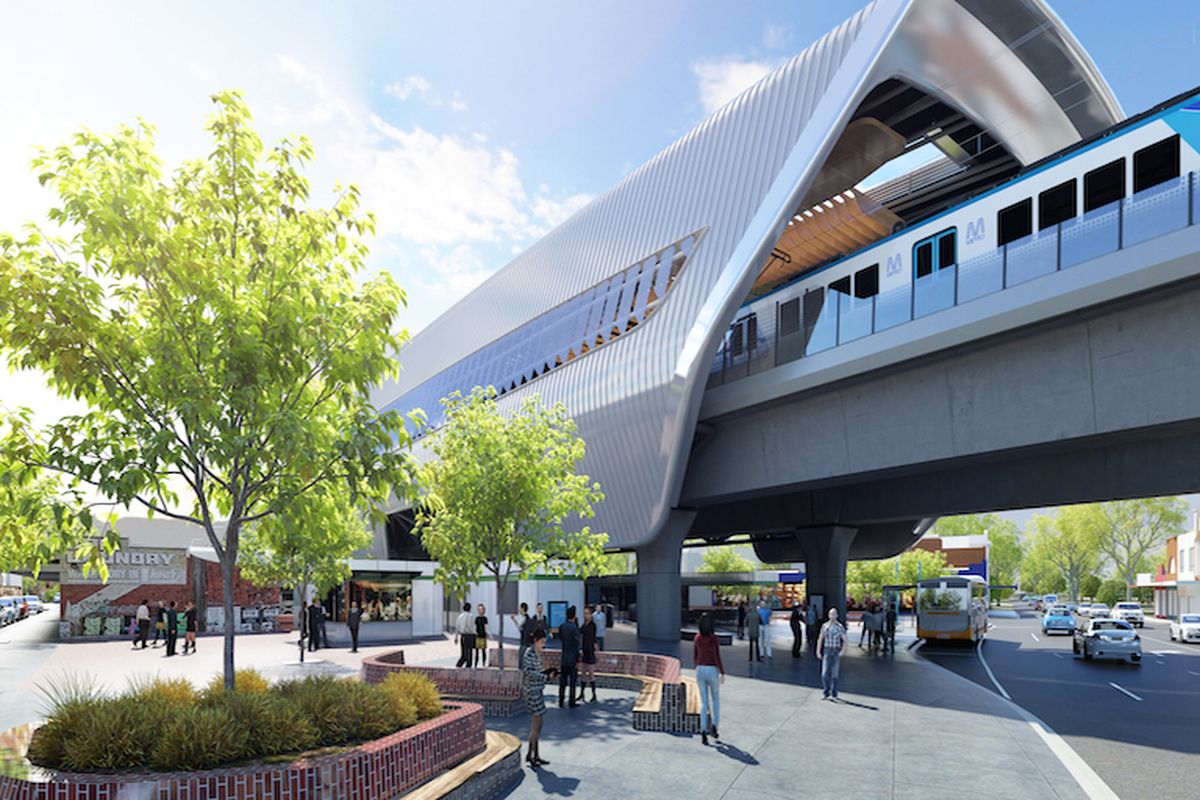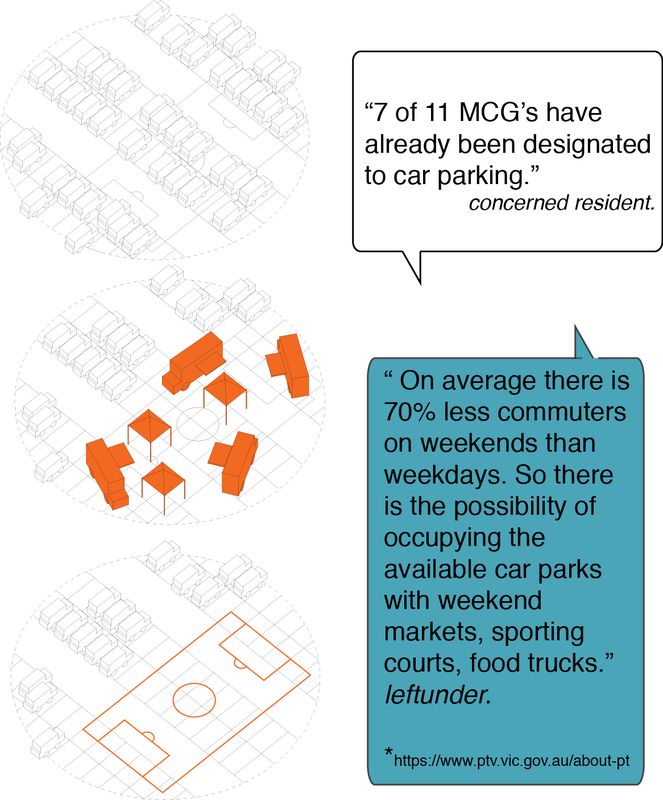An independent group is engaging with community groups affected by Melbourne’s controversial “sky rail” project to identify proposals for the 225,000 square metres of open space that elevated rail will deliver.
The group, known as Left Under and led by landscape architecture graduate Steve Mintern and architecture graduate Simon Robinson, has approached local community groups as well as local residents to identify what the community wants from the new spaces, with the intention of generating a number of site-specific public projects.
The sky rail development is part of the Victorian government’s level crossing removal project, which will see 50 rail and road intersections across Melbourne removed. Part of the government’s $1.6 billion proposed solution on the city’s Pakenham–Cranbourne line includes three portions of elevated rail, encompassing five new stations and new public parklands designed by Cox Architecture and Aspect Studios.
However, Left Under says its focus is on the leftover, or “left under,” spaces around the sky rail that are outside the scope of these initial designs.
“While we are neither for nor against the development of the sky rail, we strongly believe that the land being made available is an amazing opportunity for the communities affected,” explained Robinson and Mintern.
According to Ian Woodcock from the school of global, urban and social studies at RMIT University, groups like Left Under have an important role to play in the design of sky rail’s new public open spaces.
“Independent, community-driven proposals are needed to capture the rich and varied possibilities that could otherwise be lost if design and management is felt to rest at the local or state government scale.”
However Woodcock warns there are many difficulties that community-driven groups face, including navigating the complexity of governance and funding arrangements as well as overcoming fixed attitudes.
“The two most difficult barriers to overcome will be cynicism and inertia. Cynicism on the side of some locals, especially those who question the very existence of the ‘sky rail’ and the spaces it will open up, and inertia within the local and state administering organizations, which may wish to take the easy path rather than the most creative, innovative or experimental.”
Left Under’s website lists a number of international precedents, including Folly for a Flyover by London practice Assemble and Underpass Park in Toronto by Phillips Farevaag Smallenberg with The Planning Partnership and Paul Raff Studio, as examples of how the spaces could be used.
“I think what all these projects are doing is questioning the traditional model of what an architecture/landscape architecture/urban design office is. If this project continues to grow for us, we picture a multidisciplinary team, from planners to event managers,” said Robinson.
There has been a small but vocal opposition to sky rail since the project was announced in February 2016, with residents complaining that they were not properly consulted.
Community fears were galvinized in March when The Age published an unfavourable rendered image on its front cover, showing the proposed elevated rail line towering over a backyard and covered in graffiti. The image was commissioned by Murrumbeena resident Edward Meysztowicz.
In September, community group Lower Our Tracks launched legal action in the Supreme Court in an effort to have the project converted to a “cut-and-cover” tunnel.
Left Under says it has received mixed opinions from the community. “The response we’ve received has been mainly positive, though obviously there is a fair bit of vitriol coming our way, from people tweeting us photos of slums in Mumbai saying that this is what their suburb is going to look like [after sky rail] to being told to reveal our identities by people with fake Facebook accounts,” says Mintern.
The state government’s Level Crossing Removal Authority announced in April that an expert panel had been established to oversee plans for the 22.5 hectares of new public open space. The panel is to be chaired by the chief executive of the Royal Botanic Gardens, Professor Tim Entwisle, and includes members of local communities and councils as well as organizations such as Bicycle Victoria, Victoria Police and the Office of the Victorian Government Architect.
A spokesperson from Aspect Studios said that the practice was working with the expert panel and that this “ensures community and stakeholder issues and ideas are considered and integrated within the final design outcome.”
“We welcome more discussion on these issues and look forward to hearing their [Left Over’s] thoughts,” said the spokesperson.
The sky rail project is currently under construction and is due to be completed in 2018, prior to the next state election.
For more coverage on this topic read Craig Guthrie’s article Levelling on the Landscape Value of Rail Corridors and Ian Woodcock’s piece Rail lines over roads can help with more than just traffic jams.

